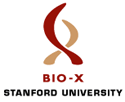• Ana Gonzalez
• Elspeth Garman
• Colin Nave
• Sean McSweeney
• Raimond Ravelli
• Gerd Rosenbaum
• Soichi Wakatsuki
• Martin Weik
• Pictures from the workshop are available. Participants who want to share their pictures can send them to Natalie Cramar.

Welcome to the Sixth International Workshop on X-ray Radiation Damage to Biological Crystalline Samples
March 11 - March 13, 2010
Redwood Conference Room, Building 48
SLAC National Accelerator Laboratory
Menlo Park, CA
The Structural Molecular Biology Program at the Stanford Synchrotron Radiation Lightsource
is pleased to host this workshop and welcomes your participation.
This series of workshops was originally concerned with the effects of radiation damage during investigation of protein structures by X-ray crystallography. Other techniques of structural biology are now being included to ensure greater information exchange. The workshop will therefore be of interest to all those using ionising radiation to examine biological structures at the molecular and cellular level.
Topics under discussion will include:
- • Reducing and mitigating radiation damage.
- • Radiation chemistry and radiolysis of biological molecules.
- • Progress in the understanding of radiation damage in macromolecular crystallography.
- • Correcting for the effects of radiation damage.
- • Reduction of metalloproteins and study of protein function.
- • Radiation damage in electron microscopy and electron crystallography.
- • Pulsed sources: Radiation damage issues.
- • Complementary (or non-crystallographic) methods to study radiation damage.
We gratefully acknowledge specific financial support for this Workshop from the Department of Energy, Office of Biological and Environmental Research, the National Institutes of Health, National Institute of General Medical Sciences, Bio-X at Stanford University, Genentech, and CEA.
Funding for this conference was also made possible (in part) by 1R13RR030726-01 from the National Center for Research Resources. The views expressed in written conference materials or publications and by speakers and moderators do not necessarily reflect the official policies of the Department of Health and Human Services; nor does mention by trade names, commercial practices, or organizations imply endorsement by the U.S. Government.
The SSRL Structural Molecular Program is supported by the Department of Energy, Office of Biological and Environmental Research, and by the National Institutes of Health, National Center for Research Resources, Biomedical Technology Program, and the National Institute of General Medical Sciences.






